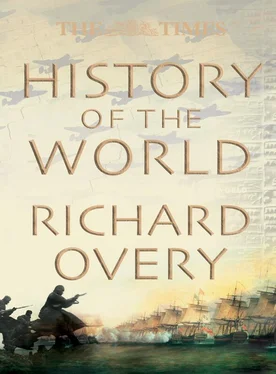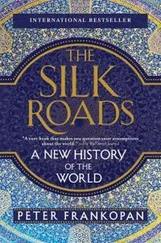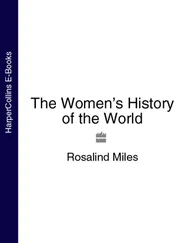2300 TO 50 BC
THE PEOPLES OF NORTHERN
EUROPE
The late Bronze Age saw a number of developments in northern Europe. The use of metals increased, new crops were cultivated, and burial practices were transformed. The “urnfield culture”, with which these changes are associated, spread over a large part of Europe and laid the foundations for the rise of the Celts, whose warrior bands briefly threatened the Mediterranean world.
Central Europe had rich supplies of copper ores, which for several centuries had been exploited to produce bronze for tools and weapons. After 1300 BC the extent of bronze-working increased dramatically, and new techniques, including the lost-wax method of casting, led to major developments in art. Delicately worked gold ornaments found in some rich graves indicate that there were also improvements in gold-working at the same time. In agriculture, the staples of wheat and barley were supplemented by legumes and oil-rich crops such as linseed. There was also an increase in the domestication of animals, with horses having a greater presence, especially to the east.
THE URNFIELD PERIOD
The most dramatic change, however, was in burial practices, and it is this that has given the urnfield period its name. Inhumation had been the usual practice in earlier centuries, but from 1300 BC there was a move towards cremation and the burial of ashes in large communal cemeteries known as urnfields. Although there were differences from region to region, and even within cemeteries, there was a considerable decrease in the quantity of grave goods buried with the dead. Some burials, such as the so-called King’s Grave at Seddin, were particularly rich, and presumably belonged to local chieftains, but most were simple. A change of practice like this may in part have reflected a change in attitudes to death, but it probably also reflected changes in social organization. Large cemeteries containing graves with little social differentiation suggest the emergence of large communities and more developed social structures.
Another feature that points to social change during this period is the large number of fortified sites. These were centuries in which there was fighting between rival communities, and the archaeological evidence points to a growing warrior culture.
THE CELTIC WORLD
The 8th century BC saw the re-establishment of contact with the centres of civilization in the eastern Mediterranean and beyond as well as with the new Greek and Phoenician colonies in the western Mediterranean and the emerging Etruscans in Italy. At the same time the techniques of iron-working were widely adopted. This development had little impact on the Atlantic coasts of Europe, which were still characterized by small-scale trade between communities with little interest in Mediterranean luxury goods. But to the east the Rhône valley provided a trade-route from the Mediterranean, especially after the foundation of the Greek colony of Massilia (Marseilles). It was this that led to the development of a “prestige goods economy” in Burgundy, seen in the rich finds from Mont Lassois and Vix, which acted as staging posts between the Mediterranean and central Europe, as well as farther east at the hill fort at the Heuneburg on the upper Danube. Contact with the steppe communities on the eastern flank of the Celtic world also continued, and by this route goods from the Far East could reach central Europe. This is well illustrated by the discovery in a burial mound beside the Heuneburg site of textiles embroidered with Chinese silk.
Among the chief exports to the Mediterranean from this period onwards was slaves, which raised the status of warriors who were able to trade prisoners of war for prestige goods from Etruria and Greece. This “West Hallstatt system” collapsed when the Etruscans started to make direct contact with the area around the Marne and Moselle. The same period also saw the emergence of a distinctive decorative aristocratic style known as “Celtic” art. Spectacular finds have been made at sites such as Somme-Bionne and Basse-Yutz.
The Celts are the first peoples of northern Europe to appear in the historical record. They are mentioned by several Greek and Roman historians, and these writings give us some insight into their social organization and their religious practices—although they have to be used with caution. Later Celtic traditions are recorded in the epic literature of Ireland and Wales, but it is not clear how much they can tell us about early Celtic Europe. What is not in question is the Celtic interest—and skill—in warfare.
After 600 BC, Celtic war-bands spread out from central Europe into Italy and Greece—Rome was attacked in 390 BC, Delphi in 279 BC—and settled as far south as Galatia in Anatolia and Galicia in Spain. Other areas, such as western France and Britain, were absorbed into the Celtic world by peaceful means, with the native aristocracies adopting the new continental fashions of art and warfare. From the 3rd century BC fortified urban settlements known as “oppida” became more common, and unified Celtic states began to appear.
Celtic social organization was increasingly influenced by the growing power of Rome, and the Celts were the first peoples of northern Europe to be incorporated within the Roman empire. Already by the end of the 2nd century BC the Mediterranean part of Gaul was a Roman province. Julius Caesar’s conquests in Gaul then brought the western Celtic world under Roman control as far as the English Channel by 50 BC. Thus the most economically advanced areas of the barbarian world were rapidly integrated within the Roman world.
Written sources from this period increasingly help to reconstruct the history of north Africa, the Nilotic Sudan, Eritrea and Ethiopia. For the rest of Africa, archaeology remains the primary source and, since research and evidence are currently meagre, for large parts of the continent the past still awaits discovery.
In the last millennium BC, north Africa was inhabited by the ancestors of the modern Berbers. At the coast these people came into contact with a variety of foreigners. The first were the Phoenicians, seafaring merchants who established trading settlements westwards from Tripoli and founded Carthage towards the end of the 9th century. Egypt at this time was politically weak and succumbed to a variety of foreign powers, among them the kingdom of Kush, based at Napata, whose kings ruled as the 25th Dynasty ( c. 770–664). From the 3rd century BC, Rome began to assert its power in the region, successfully challenging Carthaginian supremacy in the western Mediterranean. Thereafter Roman control was extended along the north African coast and, in 30 BC, Egypt was conquered. By the time the Roman empire began to weaken in the 4th and early 5th centuries AD, Christianity was widespread in its African provinces and remained unchallenged until the Arab invasions of the 7th century brought Islam to Africa.
By the 4th century BC the Kushite kingdom had moved south to Meroë, where it flourished until the 2nd century AD. Its subsequent decline was probably owed, in part, to the rise of the Aksumite kingdom in northern Ethiopia. In the mid-4th century, Aksum adopted Christianity as its official religion. Although Christian influences must have spread southwards from Egypt into Nubia towards the end of the Meroitic period, it was not until the 6th century that Christianity was introduced into the region. In the following century, the Arab invasion of Egypt began a process of Islamization that spread slowly southwards into Nubia. The rise of Islam was also a factor in the decline of Aksum, which had ceased to exist as a political entity by about AD 700.
IRON-WORKING AND FARMING
Almost certainly it was the Phoenicians who introduced bronze- and ironworking to north Africa. In west Africa, iron was being used by the mid-first millennium BC. The development of an urban settlement at Jenne-Jeno from about 250 BC onwards, was probably facilitated by the use of iron tools, which helped agriculturalists to till the heavy clay soils of the inland Niger delta. The earliest evidence of iron use in southern west Africa is associated with the Nok culture, famous for its terracotta sculptures. The early iron-using communities of eastern and southern Africa show such a remarkable degree of homogeneity that they are viewed as a single cultural complex, which first appeared on the western side of Lake Victoria around the mid-1st millennium BC and had spread as far south as Natal by the 3rd century AD. In addition to iron technology, this complex is associated with the beginnings of crop cultivation, livestock herding and settlement. South of Tanzania it is also linked to the manufacture of pottery. In Namibia and Cape Province, which were not settled by these ironusing farmers, some groups had acquired domestic sheep as early as the first two centuries AD. At about the same time a distinctive Cape coastal pottery appears, but others continued with their ancient way of life, living in mobile groups, hunting, gathering and making stone tools.
Читать дальше










